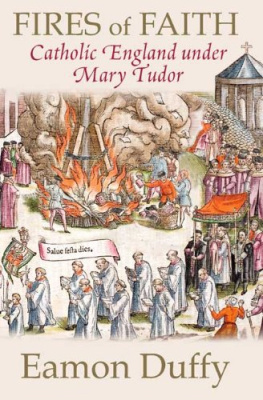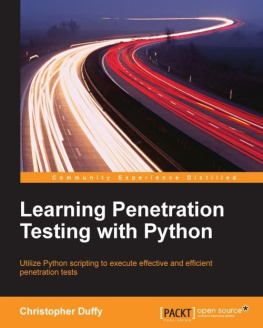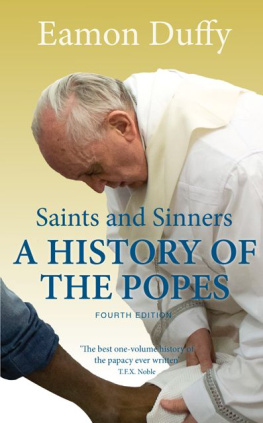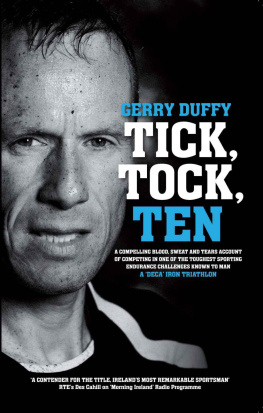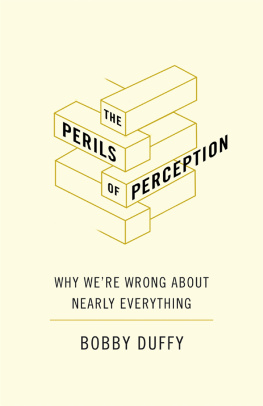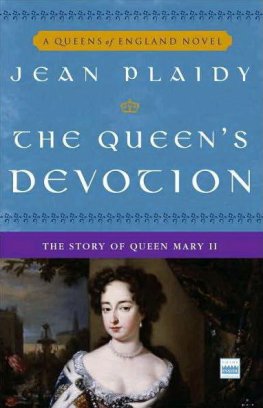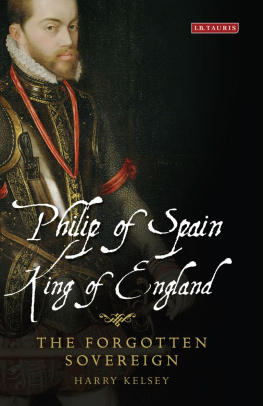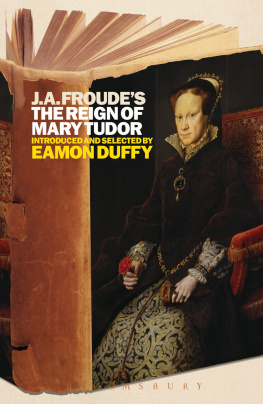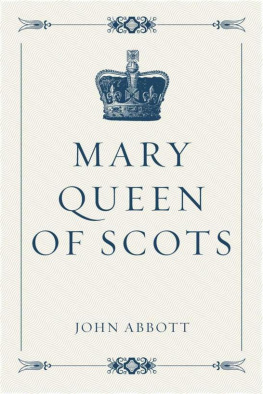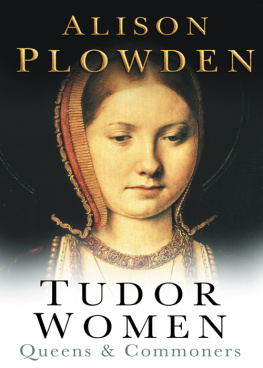F IRES OF F AITH
E AMON D UFFY is professor of the history of Christianity, University of Cambridge, and fellow of Magdalene College. He has received many awards for his previous books, including the Hawthornden prize and the Longman-History Today prize.
Fires of Faith is dramatic historical revisionism at its best.
Brad S. Gregory Commonweal
Duffy's book gives a richly textured survey of the Marian church, making an eloquent and forceful case for a complete reassessment of the traditional view.
Lucy Wooding Times Higher Education
In a short, evidence-packed book [Duffy] has shone a just and equal light on the English church in Mary's reign.
Lucy Beckett The Spectator
A LSO BY E AMON D UFFY
The Stripping of the Altars: Traditional Religion in England 14001580
9780300108286 (paperback)
Saints and Sinners: A History of the Popes
9780300115970 (paperback)
The Voices of Morebath: Reformation and Rebellion in an English Village
9780300098259 (paperback)
Marking the Hours: English People and Their Prayers, 12401570
9780300117141

Frontispiece. The burning of the bones of Martin Bucer and Paul Fagius in Cambridge market-place, Saturday 6 February 1557.
The corpses of the European protestant theologians Martin Bucer and Paul Fagius were burned in Cambridge Marketplace in February 1557, a symbolic purging of the University of its recent heretical past. Cartloads of heretical books were also burned, and Thomas Watson, Bishop of Lincoln, preached a two hour sermon against the dead men's errors. The churches polluted by their burials were reconsecrated, and the Blessed Sacrament solemnly paraded through the streets. The veil in which the Sacrament was carried by Cuthbert Scott, Master of Christ's and Bishop of Chester, had been personally blessed by Pope Paul IV, and was donated by Nicolo Ormanetto, Cardinal Pole's chief legal officer, who oversaw the Legatine Visitation of the Universities. Foxe's print compresses the events of several days into a single vivid image.
F IRES OF F AITH
Catholic England under Mary Tudor
Eamon Duffy
Yale University Press
New Haven and London
Published with assistance from the foundation established in memory of Oliver Baty Cunningham of the Class of 1917, Yale College.
All rights reserved. This book may not be reproduced in whole or in part, in any form (beyond that permitted by sections 107 and 108 of the US Copyright Law and except by reviewers for the public press), without written permission from the publishers.
Copyright Eamon Duffy
reprinted with corrections 2009
first paperback edition 2010
10 9 8 7 6 5 4 3 2 1
Typeset by SNP Best-set Typesetter Ltd., Hong Kong
Printed by TJ International, Padstow
L IBRARY OF C ONGRESS C ATALOGING-IN- P UBLICATION D ATA
Duffy, Eamon.
Fires of faith: Catholic England under Mary Tudor / Eamon Duffy.
p. cm.
Includes bibliographical references (pp. 23138) and index.
ISBN 9780300152166 (cloth: alk. paper)
ISBN 9780300168891 (paperback: alk. paper)
1. Catholic ChurchEnglandHistory16th century. 2. EnglandChurch historyHistory16th century. 3. Counter-ReformationEngland. 4. Mary I, Queen of England, 15161558Religion. 5. Pole, Reginald, 15001558. I. Title.
BX 1492. D 83 2009
274.2'06 DC 22
2008049807
In piam memoriam
A NTHONY J OSEPH S TOREY 19192007
What will remain of us is love
Contents
Foreword
This book has been long in the making. In 1992, I published a short account of the restoration of catholicism in the reign of Mary Tudor as chapter 16 of The Stripping of the Altars. In it, I offered a much more positive assessment of the religious achievements of Mary's regime than was at that time commonly accepted. I was aware of the need for a fuller treatment, however, especially one that paid proper attention to the most controversial aspect of the reign: the campaign of burnings, during which, in the space of just under four years, 284 protestant men and women were put to death for their beliefs. An invitation to contribute an essay on that terrible episode to the Vatican Symposium on the Inquisition in 1999 determined me on such a larger treatment. But other projects intervened, and the opportunity to tackle these issues only presented itself with the invitation from the Master and Fellows of Trinity College, Cambridge, to deliver the 20078 Birkbeck Lectures in Ecclesiastical History. The present book is a much expanded version of the five lectures delivered in Cambridge in the Michaelmas Term 2007. I am very grateful indeed to Trinity College for providing the catalyst for this long-delayed study.
In shaping the book I was anxious not to sacrifice the momentum intrinsic to a course of expository public lectures. This is, therefore, emphatically not a general history of religion in the reign of Mary Tudor. Though the material on the burnings has been greatly expanded in order to confront head on the most controversial but least understood aspect of the reign, I have tried to retain the essential shape and scope of the original talks. So Fires of Faith makes no attempt to cover all aspects of the Marian restoration. It has virtually nothing to say about the protestant underground congregations at home, or about the protestant diaspora overseas, though the existence and activities of both groups were a matter of intense concern to the Marian regime. And important aspects of the Marian restoration itself, such as the process of reconstruction in the parishes, the transformation of the universities, the revival of monasticism and the state of the parish clergy, are here touched on lightly, or not at all. I hope that what is here nevertheless provides a coherent take on the intentions, competence and achievement of the Marian church. As will be evident to any reader, I rate highly both the calibre of many of the leaders of the church under Mary, and their actual impact on the religious lives of the people. In view of the horror of the burnings, which I have no wish to palliate or excuse, I am aware that this is still a controversial position. In the last fifteen years or so, a good deal of scholarly work has contributed to the emergence of a more positive assessment of many aspects of Mary's regime. But the burnings remain an obstacle to any such reappraisal. The imposition of religious conformity by lethal force is deeply repellent to modern sensibilities. The religious violence of the mid-Tudor period has particularly disturbing resonances for our times, in which the deadliness of religious hatreds has been repeatedly brought home with terrible immediacy.
Moreover, the Marian martyrdoms loom large in English national mythology. I have ceased to be surprised at the visceral and sometimes violent hostility of even sophisticated and intelligent English people to any attempt at an objective reassessment of the campaign of repression under Bloody Mary. Even in our self-consciously secular times, sixteenth-century stereotypes, consolidated in the triumph of protestantism under Queen Elizabeth, persist in popular culture. The Black legend of catholicism as intrinsically foreign, cruel and obscurantist flourished, and the association of popery and tyranny, popery and wooden shoes became constitutive of English protestant identity in the course of the eighteenth and nineteenth centuries. It has been a long time a-dying: the lurid portrayal of Mary and her court in Shekhar Kapur's enormously successful biopic
Next page
